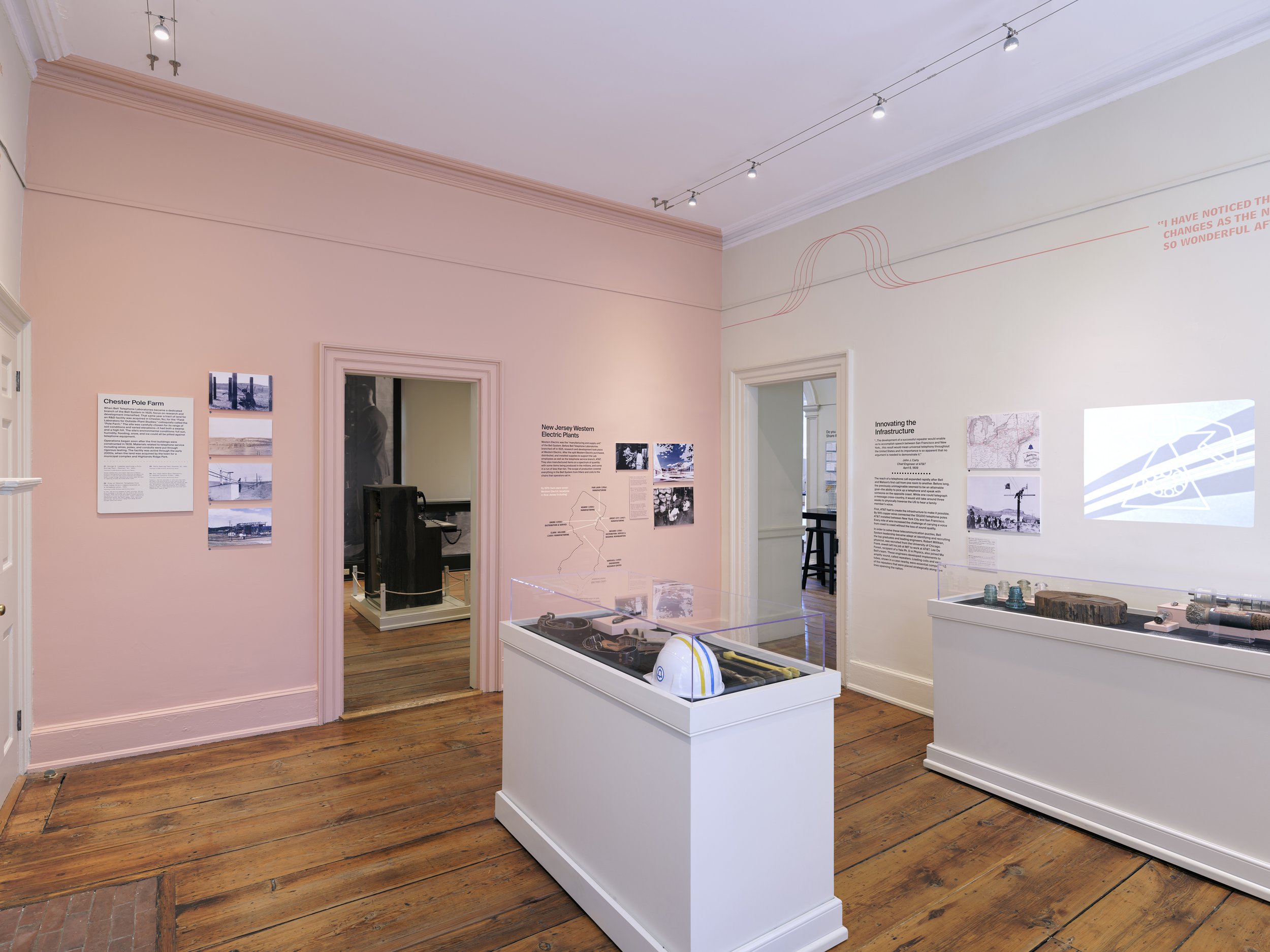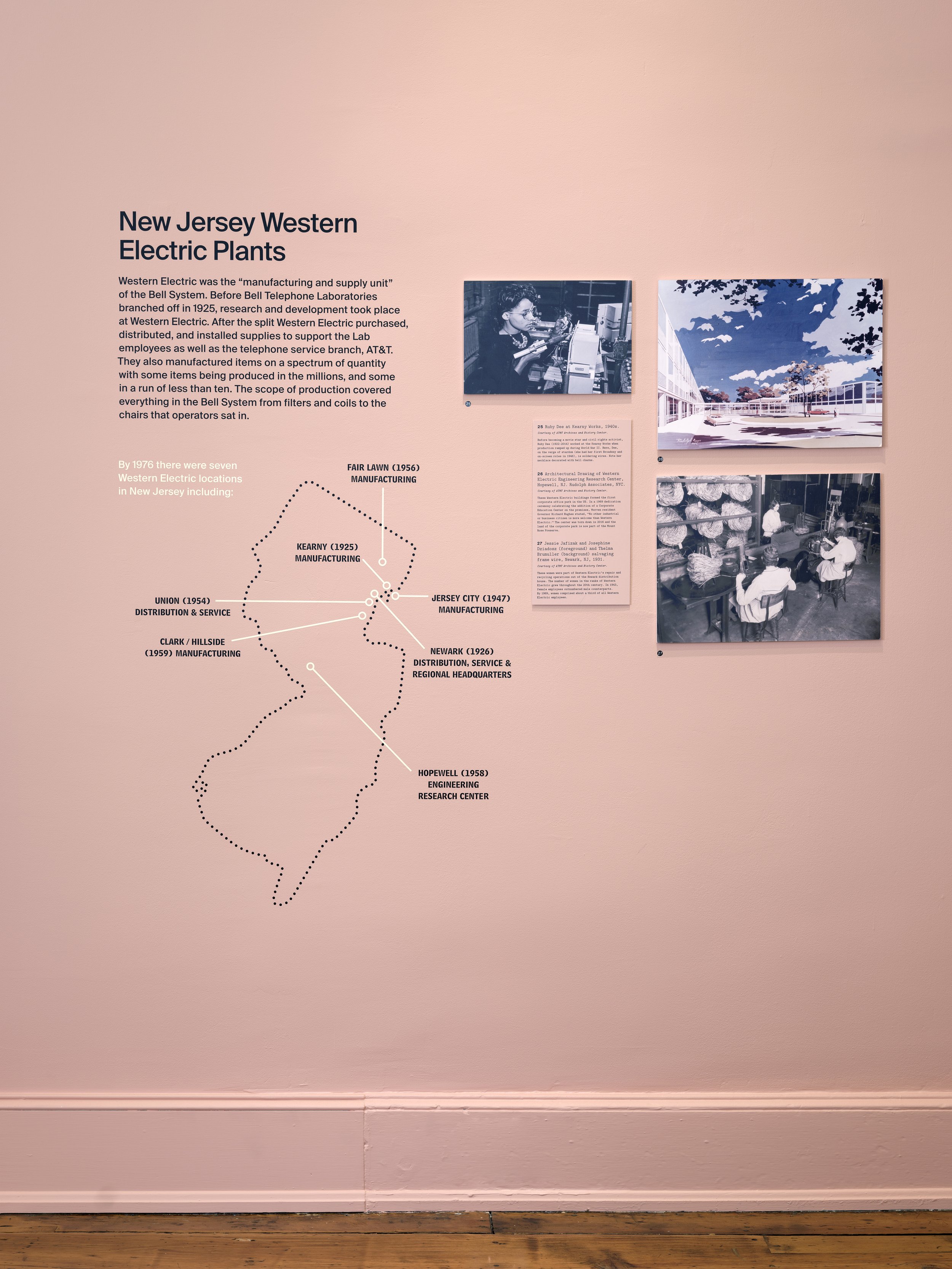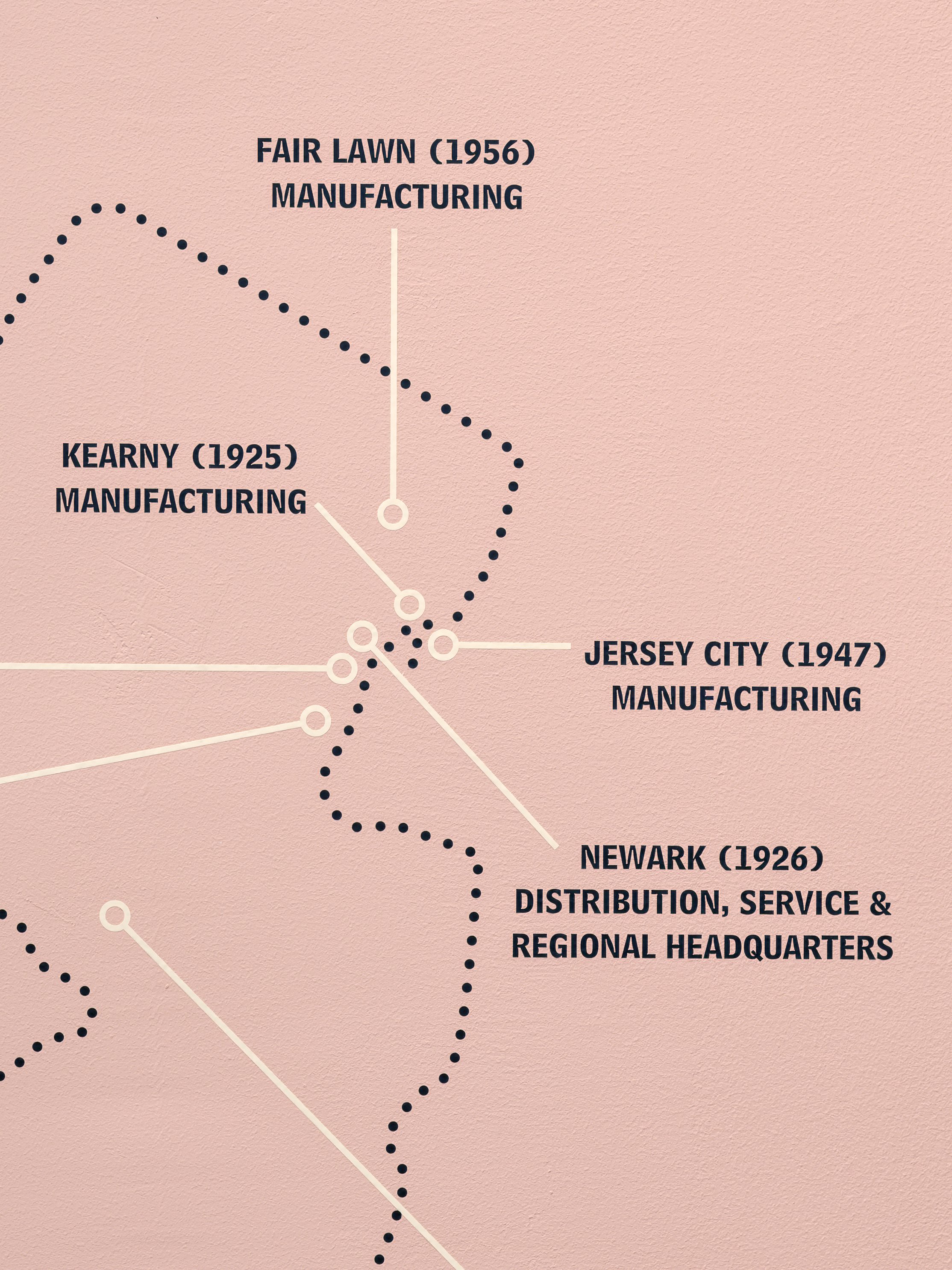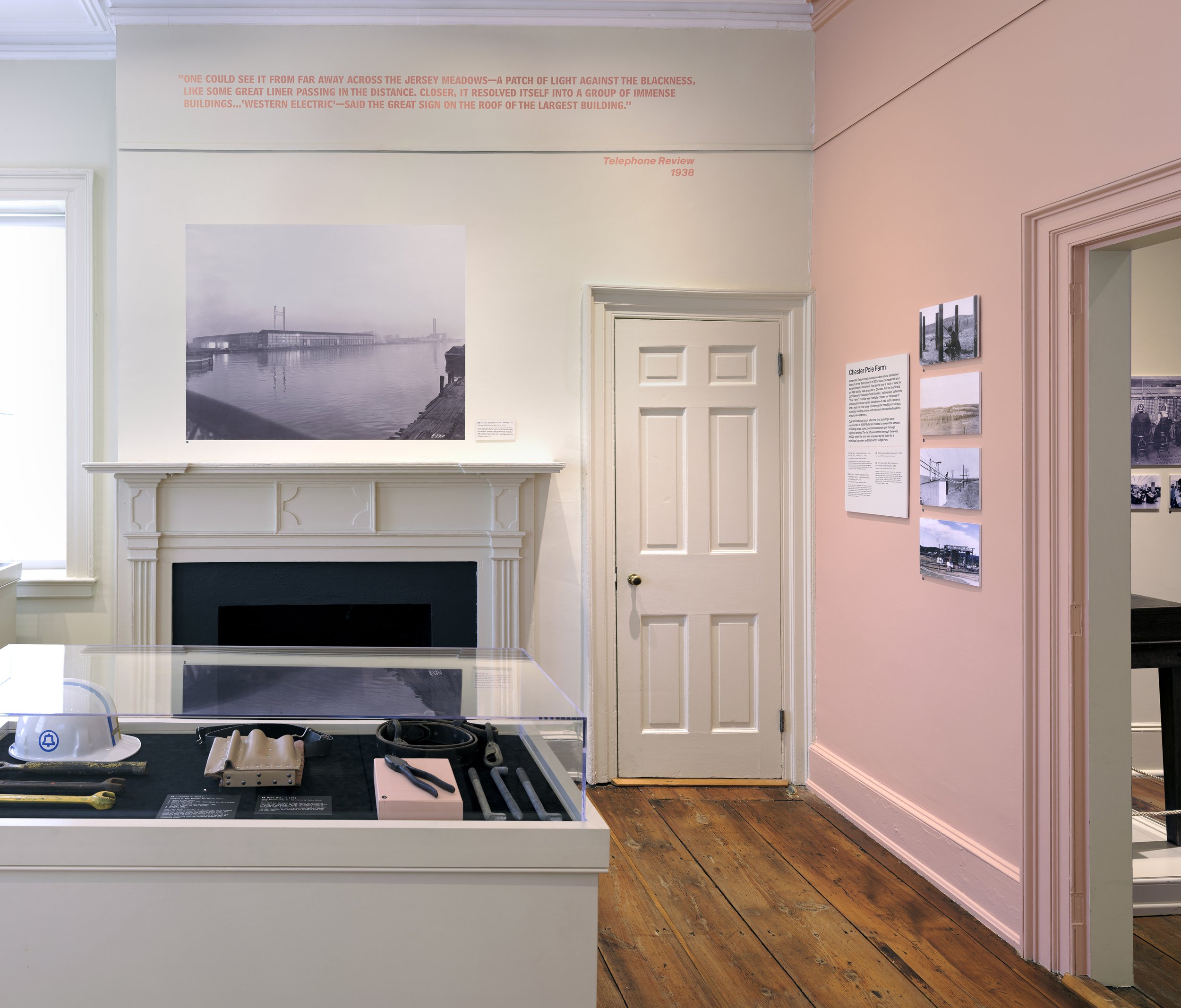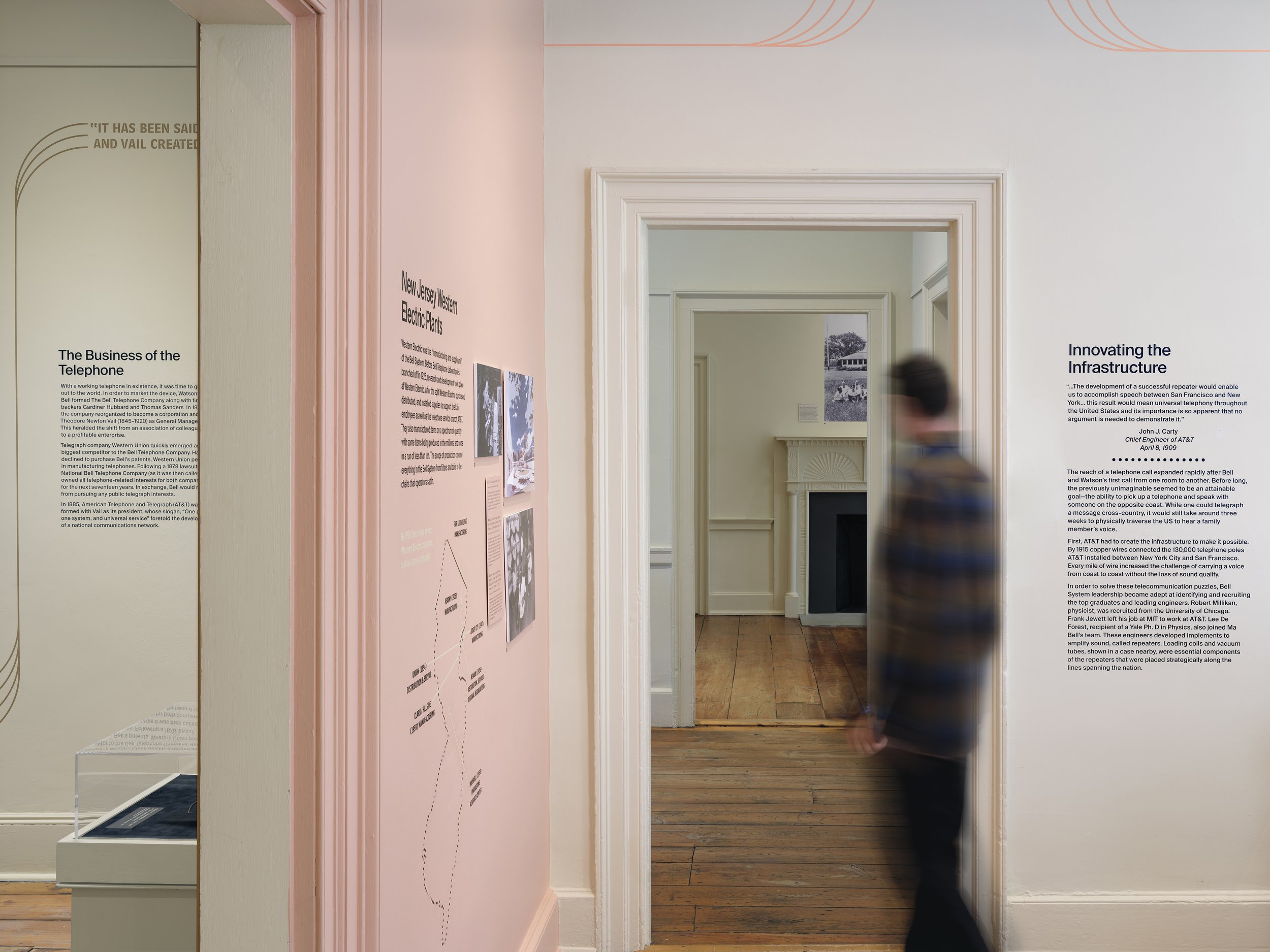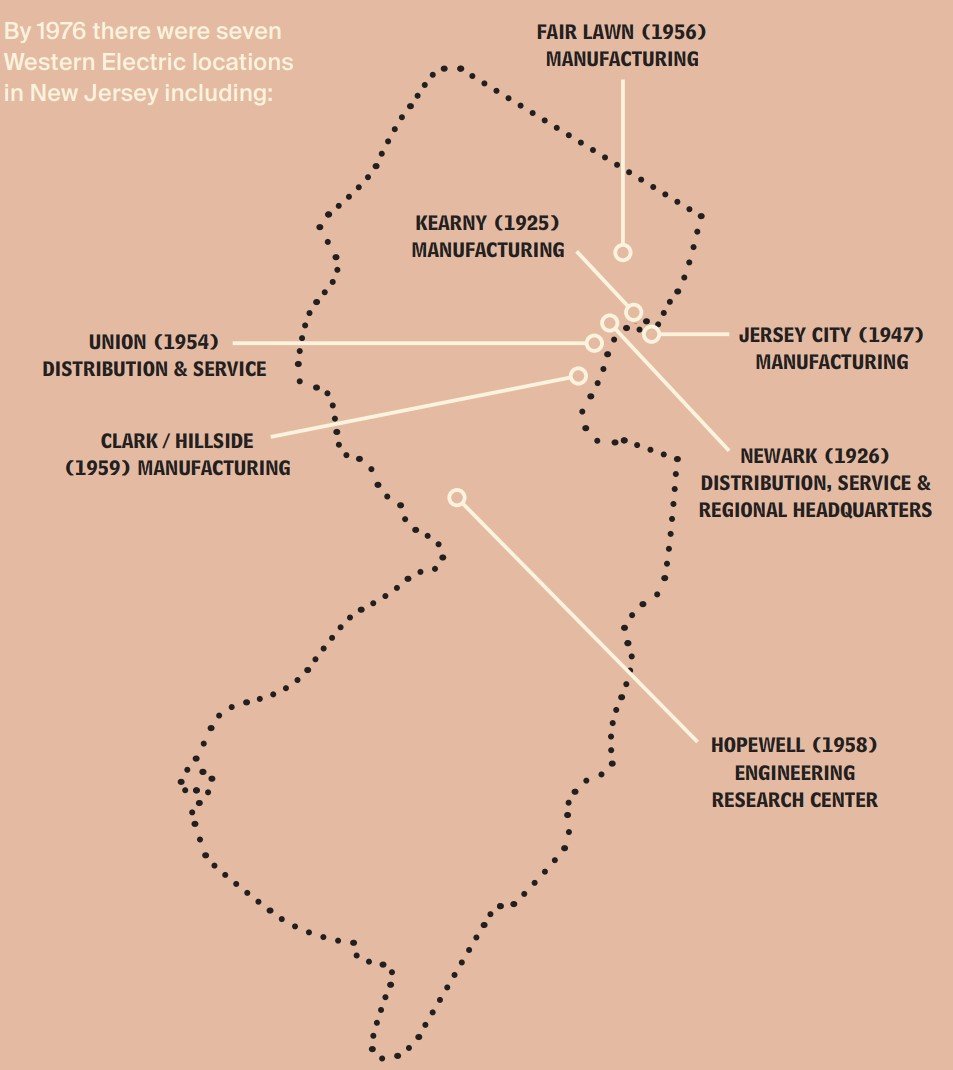Gallery 2
Click here to head back to the Ma Bell landing page.
Quote by Thomas Watson on May 18, 1915. “I have noticed that one’s mental attitude towards a phenomenon changes as the novelty wears off. The new effect does not seem so wonderful after a few repetitions.”
Innovating the Infrastructure
Lines and Metallic Circuit Connections. Long Distance Map / Chart, 1892. American Telephone and Telegraph Co.
Collection of AT&T Archives and History Center.
“....The development of a successful repeater would enable us to accomplish speech between San Francisco and New York... this result would mean universal telephony throughout the United States and its importance is so apparent that no argument is needed to demonstrate it.”
John J. Carty, Chief
Engineer to Vice President Thayer
April 8, 1909
The reach of a telephone call expanded rapidly after Bell and Watson’s first call from one room to another. Before long, the previously unimaginable seemed to be an attainable goal – the ability to pick up a telephone and speak with someone on the opposite coast. While one could telegraph a message cross-country, it would still take around three weeks to physically traverse the U.S., to hear a family member’s voice.
First, AT&T had to create the infrastructure to make it possible. By 1915 copper wires connected the 130,000 telephone poles AT&T installed between New York City and San Francisco. Every mile of wire increased the challenge of carrying a voice from coast to coast without the loss of sound quality.
In order to solve these telecommunication puzzles, the Bell System became adept at identifying and recruiting the top graduates and leading engineers. Robert Millikan, physicist, was recruited from the University of Chicago. Frank Jewett left his job at MIT to work at AT&T. Lee De Forest, recipient of a Yale Ph. D in Physics, also joined Ma Bell’s team. These engineers developed implements to amplify sound, called repeaters. Loading coils and vacuum tubes, shown in a case nearby, were essential components of the repeaters that were placed strategically along the lines spanning the nation.
Click here to learn more about the Infrastructure.
The First Transcontinental Call
It took Bell linemen two years to lay copper wires from Denver to San Francisco. On January 25, 1915 the formal opening of the line was celebrated across the US, with receptions in New York, San Francisco, Washington D.C., and Jekyll Island, GA. In a nod to the first phone call made thirty-nine years earlier, Thomas Watson in San Francisco received the inaugural call from Alexander Graham Bell in New York City, while sitting under portraits of Theodore Vail and Bell. President Woodrow Wilson joined in the momentous occasion from Washington D.C.
Click here to learn more about Transcontinental Calls.
The Bell System Linemen
The Lineman Bell Telephone System Advertisement, 1948. Norman Rockwell (1894–1978).
Linemen were responsible for the dangerous work of maintenance and repair of outdoor telephone lines. Linemen worked at dizzying heights and, as more buildings became electrified at the turn of the century, the risk of electrocution expanded. Like most professions at the time, this was a job held exclusively by men. In 1975, Shelly Staib, of Kansas, became one of the first female lineworkers for the Bell System.
Safety was paramount to the job. Linemen were trained in electrical safety and first aid. Like other positions in the Bell System, linemen had specialized equipment. Everything, down to the type of metal used on rivets, was tested to be of optimal specifications. Special 2-inch leather harnesses of water-resistant material were designed to ensure the safety of the men working in all types of weather.
Click here to learn more about the Linemen of Bell.
Chester Pole Farm
View of Chester Telephone Pole Farm taken from a camera mounted on a telephone pole, 1931.
Collection of AT&T Archives and History Center.
When Bell Telephone Laboratories became a dedicated branch of the Bell System in 1925, focus on research and development intensified. That same year a tract of land for an R&D facility was acquired in Chester, NJ for the “Field Laboratory for Outside-Plant Studies,” colloquially called the “Pole Farm.” The site was carefully chosen for its range of soil conditions and varied elevations – it had both a swamp and a high hill. The site’s environmental conditions: full sun, humidity, flooding, snow, and ice could all be pitted against telephone equipment.
Operations began soon after the first buildings were constructed in 1928. Materials related to telephone service including wires, poles, and conduits were put through rigorous testing. The facility was active through the early 2000s, when the land was acquired by the town for a municipal complex and Highlands Ridge Park.
Click here to learn more about the Chester Pole Farm.
To learn more about the history of Bell Telephone Laboratories, click here to see a talk by Jon Gertner, NY Times bestselling author of The Idea Factory: Bell Labs and the Great Age of American Innovation.
NJ Western Electric Plants
Map of Western Electric Locations.
Western Electric was the “manufacturing and supply unit” of the Bell System. Before Bell Telephone Laboratories branched off in 1925, research and development took place at Western Electric. After the split Western Electric purchased, distributed, and installed supplies to support the Lab employees as well as the telephone service branch, AT&T. They also manufactured items on a spectrum of quantity with some items being produced in the millions, and some in run of less than ten. The scope of production covered everything in the Bell System from filters and coils to the chairs that operators sat in.
Click here to learn more about the Western Electric Plants in New Jersey.
Click here to move to the next room in this exhibition, Gallery 3.

